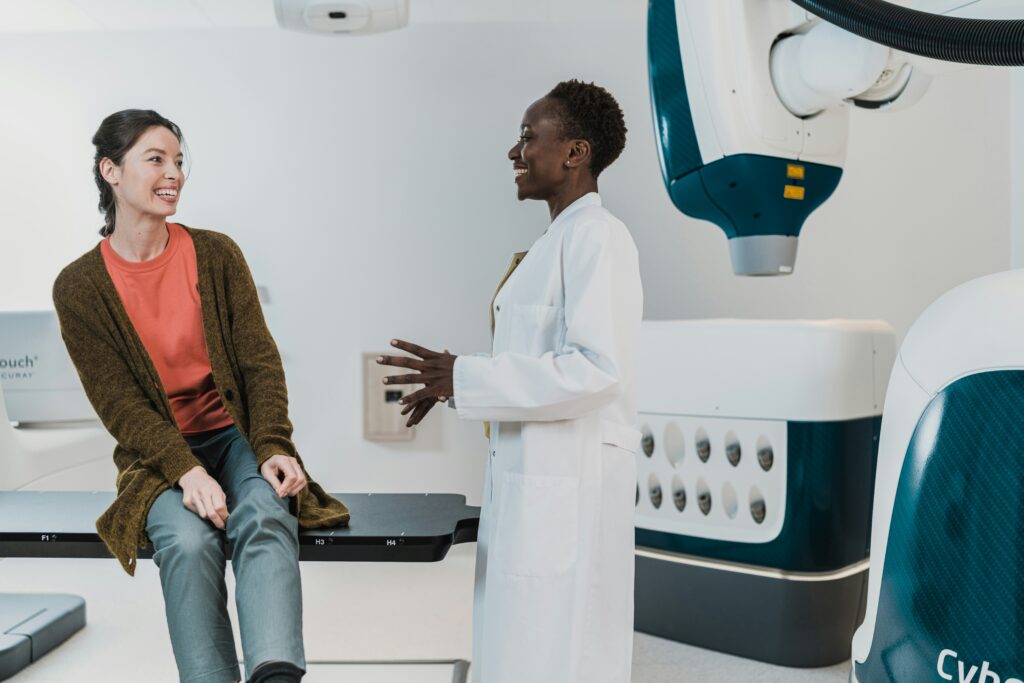Endometriosis occurs when tissue similar to the uterine lining grows outside the uterus. This often leads to symptoms such as pelvic pain, heavy periods, and, in some cases, fertility challenges. Because these symptoms often overlap with other health issues, diagnosis is not always straightforward. Exploring the signs and diagnostic process for endometriosis is key to getting timely treatment and improving well-being.
Recognizing Endometriosis Symptoms
Recognizing the signs of endometriosis is key to timely diagnosis and effective management. Here are some common symptoms associated with the condition:
- Pelvic Pain: This pain worsens during menstruation and may feel severe than regular period cramps. It occurs because endometrial tissue outside the uterus thickens, breaks down, and bleeds with each menstrual cycle, but has no way to exit the body.
- Abnormal Bleeding: This includes heavy periods, bleeding between cycles, and extended menstrual durations. The displaced endometrial tissue responds to hormonal changes, similar to the uterine lining, disrupting regular menstrual patterns.
- Chronic Bloating and Digestive Issues: The condition may present with symptoms such as bloating, constipation, diarrhea, or alternating bowel patterns.
- Back Pain: Back pain may result from inflammation impacting nearby tissues and organs, especially during menstruation.
Understanding these symptoms helps women seek medical evaluation earlier, ultimately improving the chances of effective treatment and symptom management.
Noticing Subtle Signs
Some endometriosis symptoms are less obvious but equally significant. Fertility problems often serve as the first indication of the condition for many women. The scar tissue and adhesions that develop can block fallopian tubes or affect egg quality, making conception difficult.
Pain during or after sexual intercourse may also signal endometriosis. This occurs when endometrial growths develop on tissues behind the vagina or on the lower uterus. The pain may be sharp or deep and often persists for hours after intimacy. Fatigue and emotional changes are other subtle signs. The chronic pain and inflammation associated with endometriosis can drain energy levels and affect mood.
Diagnosing Endometriosis
No single test can definitively diagnose endometriosis. Healthcare providers begin with a comprehensive medical history and physical examination. They review menstrual patterns, symptom severity, family history, and previous gynecological issues to build a complete picture.
During the pelvic exam, doctors check for abnormalities such as cysts or scars behind the uterus. They may also perform ultrasound imaging to identify cysts associated with endometriosis, though this test cannot detect all forms of the condition. Blood tests may help rule out other conditions with similar symptoms.
Laparoscopy remains the standard for confirming endometriosis. During this minimally invasive procedure, surgeons insert a small camera through a tiny incision in the abdomen to directly view the pelvic organs. If endometrial growths are found, they can often be removed during the same procedure.
Understanding Early Diagnosis
Early diagnosis of endometriosis provides several key benefits for long-term health outcomes. Treatment options work more effectively when the condition is caught in earlier stages, before extensive scar tissue and adhesions develop. Women who receive a prompt diagnosis can begin appropriate treatment to manage pain and preserve fertility.
Hormonal therapies, pain management strategies, and surgical interventions are often more successful when implemented early in the disease progression. Early detection also prevents years of unnecessary suffering and medical uncertainty. Many women visit multiple doctors and undergo various tests before receiving an accurate diagnosis, which can be emotionally draining.
Get Expert Endometriosis Care Today
Endometriosis symptoms can impact well-being, but proper diagnosis and treatment can provide relief. The condition requires specialized care from experienced gynecologists who understand the complexities of diagnosis and treatment options. For persistent pelvic pain, abnormal bleeding, or other related symptoms, contact a qualified women’s health provider near you to discuss your symptoms and explore diagnostic options.

